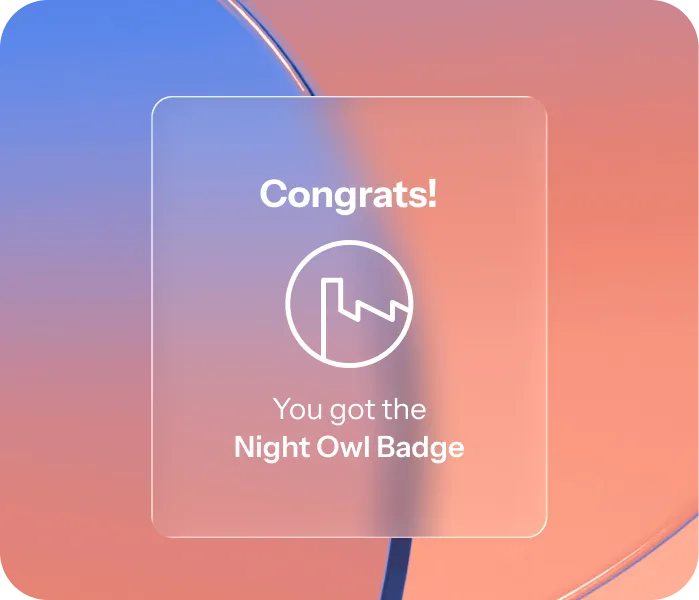
Build learning streaks that last



22%
38%
GDPR
Win the first seven days
Everything you need to reinforce healthy behaviors

Mastery quests

Study streaks with guardrails:

Learning-centered rewards
What you achieve with StriveCloud
.webp)
.webp)
.webp)
Motivation
Segmentation
Hyper-personalization
Motivate
Enrich
Segment & Nudge
Prove & Tune
The Education playbook
Stage
Mechanic(s)
Trigger
Reward
Primary KPI
What StriveCloud means for Education

Turn lessons, practice, and quizzes into habits with streaks, challenges, leaderboards, and earned perks.

Target who sees what and when; reward real progress (e.g., complete 5 lessons this week -> perk day).

Prove lift: activation, Day-30 learning streaks, course completion.





How it works
Co-design
Pick the KPI, map journeys, choose mechanics. We co-build the first loop so you launch with best practice.
Go live (no-code)
- Pick a loop (streaks, challenges, leaderboards, raffles...)
- Configure with templates and QA together
- Go live to a first cohort of users
Connect & personalize
- Sync your app events in real time
- Trigger moments and behavior-based rewards
- See the impact in customisable dashboards
Outcomes you can show the board
Module-level analytics tie every loop to daily active users, retention, and revenue. No database queries needed.
Plug in, power up
Works with your stack
Integrate once
Notifications that land
Security and scale: the enterprise checklist

Operations
Staging/production environments, config versioning

Compliance
GDPR compliant, no personal data needed for core loops

Data Location
EU-hosted by default, global hosting and on-premise options available

Access
Role-basedpermissions

Scale
Built for high-MAU consumer apps, uptime SLA
Start small, keep control
Objections, handled
Gamification is a gimmick; will it move our KPIs?
Old badges are dead. Modern loops lift daily active users and lifetime value. See Club Brugge’s 3× return visits and +40% activation elsewhere. Every mechanic ties to hard metrics in your dashboard.
Gamification cheapens our brand.
We use earned perks and progress or status design, not gimmicks. Loyalty without discount bleed.
We don’t have engineering time.
Start no-code and launch your first widgets in 14 days. Integrate later via SDKs, APIs and webhooks.
We already have Braze or OneSignal.
Keep them. They nudge outside the app. StriveCloud creates in-app motivation. Together you get smart prompts plus rewarding progress inside the product.
Will it scale to our MAU?
Yes. Built for 100k to 10M+ monthly active users with role-based access control, audit logs and service level agreement.
Is it secure and compliant enough for my highly regulated industry?
GDPR compliant with EU or global hosting and on-premise options. Role‑based access and audit logs included. References available in regulated sectors.




